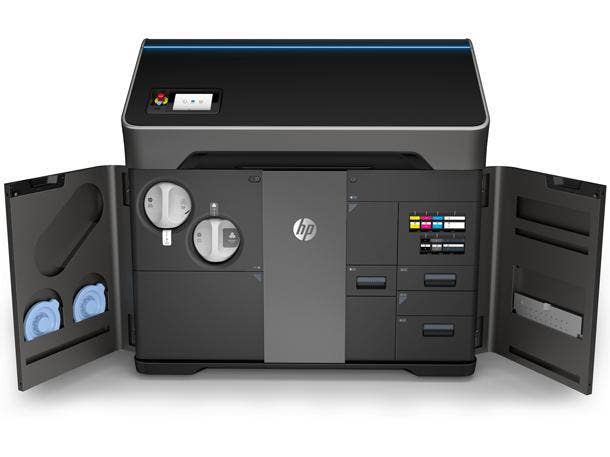HP CEO Weisler: New 3-D Printers Are 'Beginning To Scale'

While it's still early days for the 3-D print business at HP Inc., CEO Dion Weisler said Wednesday that he sees signs of strong momentum such as the rollout of new models that are more affordable and compact.
Palo Alto, Calif.-based HP is "ramping" shipments this quarter of its 300 Series and 500 Series Jet Fusion 3-D printer models—which are focused on printing prototypes—while the company's metal 3-D printers are a "really exciting" next phase, Weisler said during a conference call with reporters and analysts on Wednesday.
The 300 Series and 500 Series 3-D printers feature the same technology of HP's production part 3-D printers, but with a smaller footprint and price tag. The expanded Jet Fusion lineup includes models that can print full-color objects as well as models that just do black-and-white. Capabilities include printing at high speeds—up to 52 parts in 15 hours.
"We've always said this is a long-term business for us. We're not playing a short game here. We characterize it that way in our strategy—we talk about core, we talk about growth, and we talk about future. And 3-D printing is clearly future," Weisler said during the conference call Wednesday. "What I think are important markers are the things that are going on inside the business."
For instance, the 300 Series and 500 Series systems are "beginning to scale," while HP is driving forward in metal 3-D printing through partnerships with manufacturing companies such as Volkswagen, Weisler said.
"We're shipping millions of parts that are printed on Multi Jet Fusion, and we're really, really satisfied where we are in this journey," he said.
Orinda, Calif.-based Hawk Ridge Systems, a value-added reseller for HP's Multi Jet Fusion printers, has been seeing strong early interest in the 300 and 500 series 3-D printers, said Paul Rudin, Hawk Ridge's vice president of digital manufacturing.
Along with the high printing speeds offered by the printers, the ability to 3-D print color prototypes is a "key component to the interest factor in this machine," Rudin told CRN.
Overall, some companies that had investigated the original HP 3-D printers found they were "a little bit too large," Rudin said. "Now the new 500 and 300 series provides [some customers] with a much better entry point—not only from a lower-cost standpoint, but also just because of the overall footprint. It's a much smaller machine."
Quarterly Results
On Wednesday, HP reported that revenue reached $14.71 billion for its first fiscal quarter of 2019, which ended Jan. 31—up 1.3 percent from $14.51 billion during the same period a year ago.
The company's personal systems business grew 2.2 percent during the quarter, year over year, to reach $9.66 billion in revenue.
As expected, the ongoing shortage of Intel CPUs constrained HP's personal systems shipments during the quarter, the company said. Intel's CPU shortage has been impacting PC shipments since at least September. “The first-half headwinds we previously shared with you are playing out,” Weisler said Wednesday, during a separate conference call with analysts.
Notebook PC revenue still rose 6 percent year-over-year for HP, coming in at $5.92 billion during fiscal Q1. But desktop PC revenue fell 3 percent, to $2.86 billion. And overall, PC units were down 3 percent for HP.
Meanwhile, in print, HP reported that revenue was essentially flat year over year at $5.06 billion in fiscal Q1, compared to $5.08 billion a year earlier.
Commercial printing hardware saw 5-percent growth, but print supplies revenue dropped 3 percent from the same period of 2018. “There was an unexpected challenge in supplies, and we have more work to do there,” Weisler said during the conference call with analysts.
Weisler attributed the unexpected drop in part to an increase in commercial customers buying supplies online. While HP has a strong share in online supplies sales, it’s lower than HP’s share with commercial resellers, Weisler said. HP is “taking action” in the supplies business including through additional targeted marketing and lowering its supplies inventory, he said.
Net earnings during HP's first fiscal quarter came in at $803 million, or 51 cents per diluted share. That is down from $1.94 billion, or $1.16 per diluted share, during the same period a year earlier.
HP’s stock price decreased 10 percent in after-hours trading on Wednesday to $21.35.